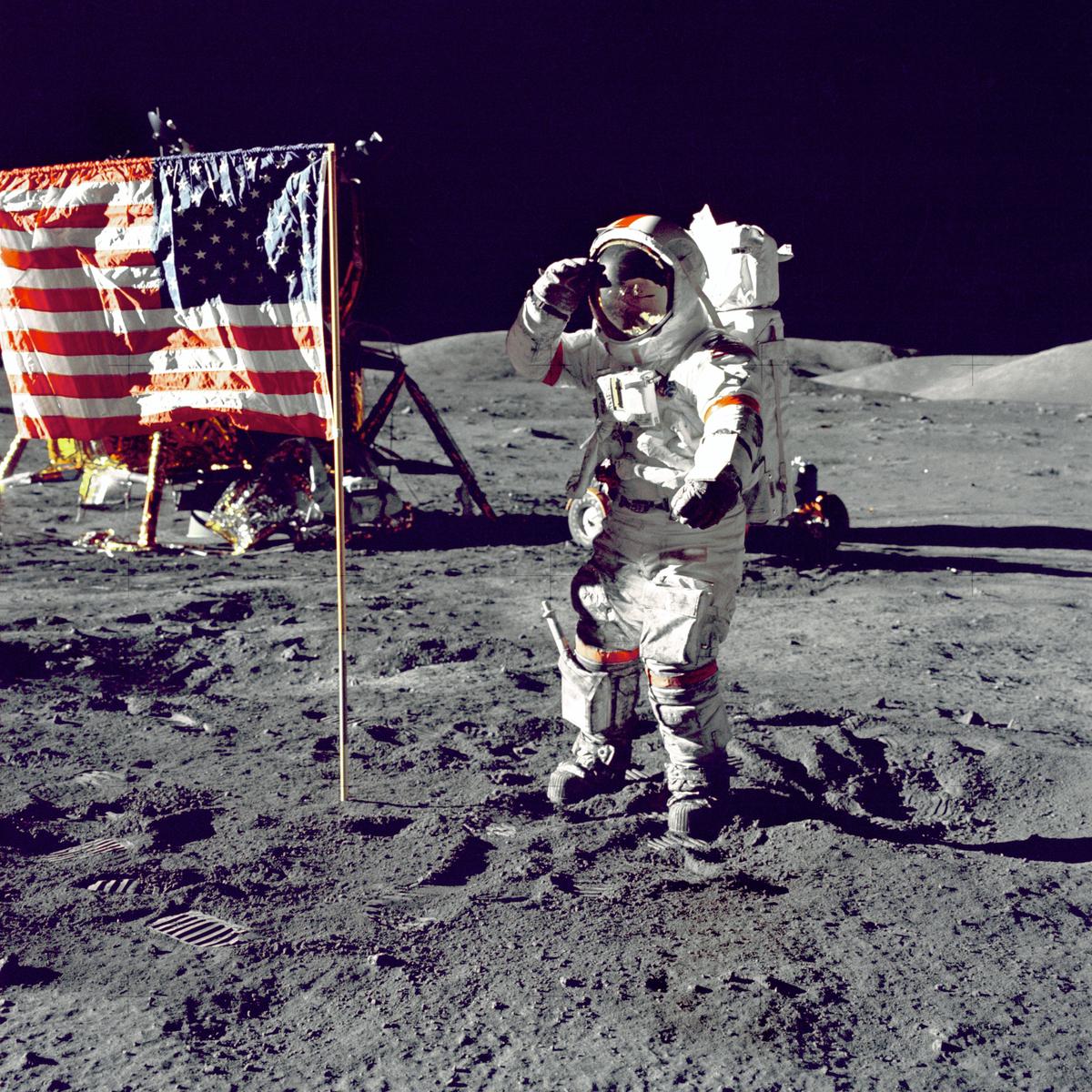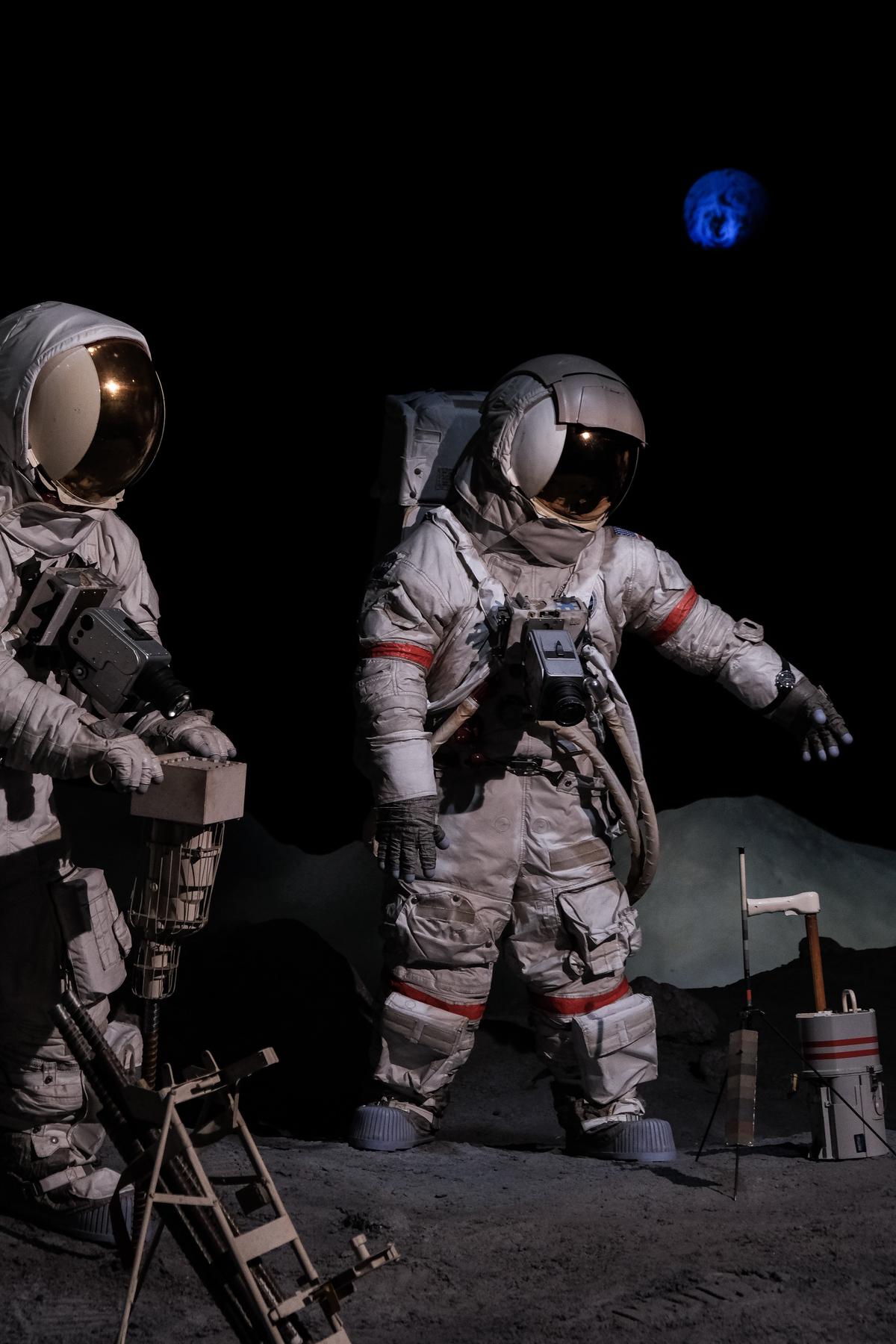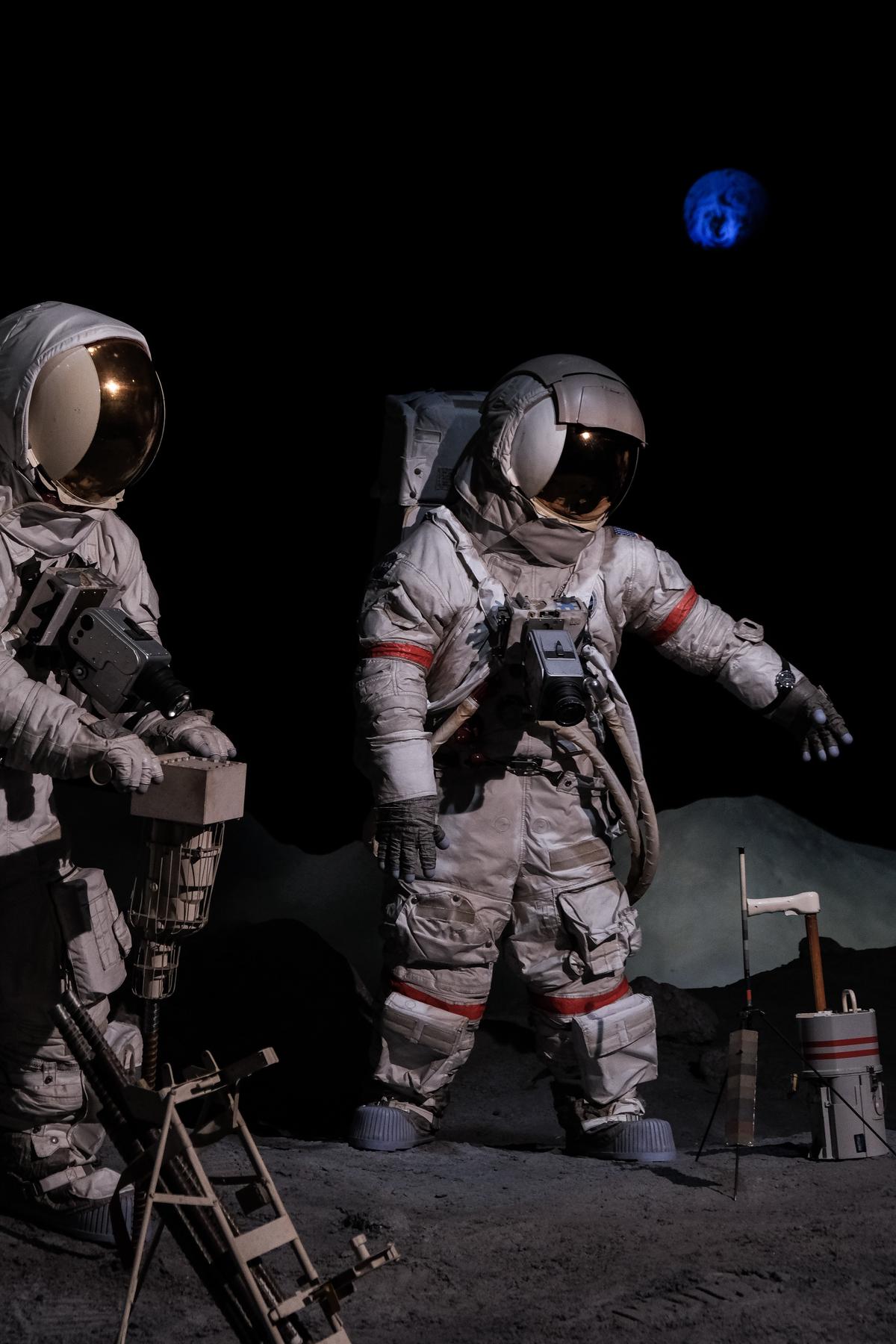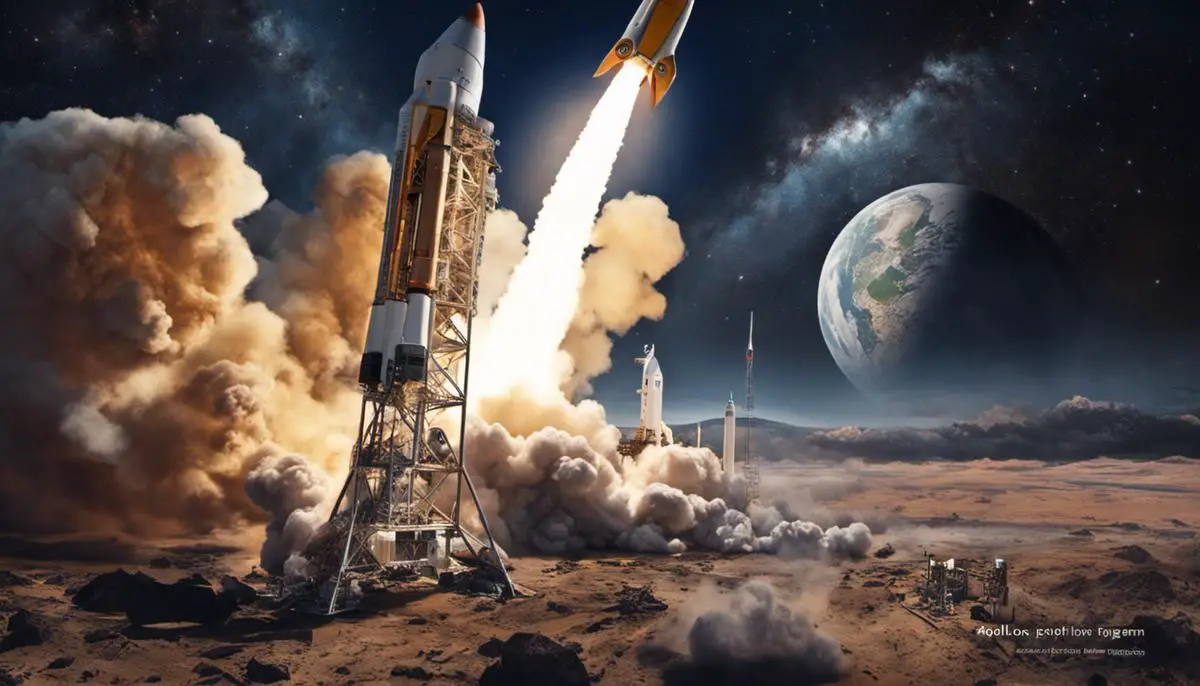The Apollo program, a significant chapter in the annals of space exploration, redefined man’s relationship with the cosmos. Born out of geopolitical rivalry, visionary leadership, and the spirit of scientific discovery, it continues to serve as a shining example of human grit, collaboration, and innovation. A profound embodiment of human aspiration, the Apollo program not only marked humanity’s first physical contact with an extraterrestrial body but also triggered a spate of scientific and technological advancements that have profoundly transformed our lives. This chronicle delves deep into the origins, milestones, and influences of this groundbreaking program, tracing its impact from then up to the present day.
Contents
Origins and Purpose of the Apollo Program
Origins of the Apollo Program
The birth of the Apollo Program can be traced back to the height of the Cold War, specifically to the moment the Soviet Union launched the first artificial satellite, Sputnik, in 1957. This sent shockwaves across the American nation, sparking fear and concern over Soviet advances in technology and outer space capabilities. This event, along with the human urge to explore and understand the mysteries of our universe, marked the start of what would come to be known as the “space race.”
Visionary Leadership and Geopolitical Considerations
The Apollo Program came into full force under President John F. Kennedy’s administration. In a historic congress address on May 25, 1961, Kennedy expressed his vision of landing a man on the moon and returning him safely to earth before the end of the decade. This bold statement was not just about scientific advancement and exploration but had significant geopolitical implications. It was a reaffirmation of American technological superiority and an assertion of the country’s position as a global leader during a time of intense international tension.
Kennedy’s vision was further highlighted in his speech at Rice University in September 1961, where he expounded on the importance of the space race’s competitive aspects. He stated, “We choose to go to the moon in this decade and do the other things, not because they are easy, but because they are hard.”
Mission and Strategic Objectives
The mission of the Apollo Program was simple yet monumental: to land a man on the moon and return him safely to earth. This mission was embedded within broader strategic objectives, including:
- Establishing technology required for crewed space travel and operations,
- Achieving pre-eminence in space for the United States,
- Carrying out a program of scientific exploration of the Moon.
These broad goals required significant developments in areas such as command and service module (CSM) technology, lunar module technology, launch vehicle technology, space suits, guidance and navigation systems, and software development.
The Cost of Apollo Program
The Apollo Program was an expensive undertaking. With an estimated cost of $25.4 billion (or around $152 billion in today’s dollars adjusted for inflation), it was one of the most significant investments made by the United States government in the 20th century. This vast sum funded not only the design and manufacturing of spacecraft and rockets but also the establishment of supporting infrastructure like the Mission Control Center and the training of astronauts.
Apollo Program: Historical Achievements and Living Legacy
The Apollo Program, initiated and led by NASA, will forever hold a significant place in human history due to its trailblazing achievements in space exploration. The unforgettable moment when Neil Armstrong and Buzz Aldrin, the crew members of Apollo 11 mission, took their first steps on the moon on July 20, 1969, is considered a watershed moment in the annals of human endeavor. Subsequent missions, despite facing challenges such as the tragic Apollo 1 fire, continued to make remarkable scientific contributions.
The reverberations of the Apollo Program remain strongly influential in the 21st century. Successes during the Apollo era precipitated remarkable technological progress and forged a path of international cooperation in space exploration. The groundbreaking images of Earth captured from space during the Apollo missions provided a fresh perspective on our planet’s delicate position within the cosmos.
Today’s space exploration initiatives such as the Artemis Program inherently embody and perpetuate the ambitions cemented by the Apollo Program over half a century ago. The ongoing exploration of Mars and other missions beyond our immediate celestial neighborhood stand on the shoulders of the pioneering Apollo missions. Therefore, the ripple effect of the Apollo Program extends far beyond its active years, continuing to shape and inspire present and future ventures into the vastness of space.

Key Milestones and Achievements of the Apollo Program
The Genesis of the Apollo Program
The Apollo Program stands as a tremendous accomplishment by NASA, America’s dedicated space agency. Incepted in 1961, the purpose of this distinct mission was to successfully land the astronauts on the moon and guarantee their safe return. This audaciousgoal was laid down by President John F. Kennedy as a strategic move in response to the initial successes of the Soviet Union in the domain of space exploration.
First Unmanned Apollo Missions
The program began with unmanned missions designed to test the Apollo spacecraft without risking human lives. The first of these, Apollo 1, ended tragically in 1967 during a pre-launch test, when a cabin fire killed all three astronauts on board. An intensive investigation led to critical design and safety improvements, providing important lessons that would help ensure the success of future missions.
Apollo 7: The First Manned Mission
The first manned Apollo mission, Apollo 7, successfully launched in October 1968. The flight tested the command module in Earth’s orbit, laying the groundwork for the lunar mission that would follow.
Apollo 8: The First Manned Lunar Orbital Mission
Apollo 8 followed as the first mission to send humans around the moon in December 1968. This mission focused on testing the crew’s capability to navigate to and from the moon.
Apollo 9 and Apollo 10
Apollo 9 and Apollo 10 were critical preparatory missions for the actual moon landing. Apollo 9 tested the lunar module in Earth’s orbit for the first time, while Apollo 10 served as a complete dress rehearsal for the first moon landing, performing all the steps of the mission short of the actual landing.
Apollo 11: The Moon Landing
The Apollo program’s most iconic mission was Apollo 11, which famously landed astronauts Neil Armstrong and Buzz Aldrin on the moon in July 1969. Armstrong’s first steps and his famous words, “That’s one small step for man, one giant leap for mankind,” were broadcast to a global audience, marking a momentous achievement in human history.
The Later Apollo Missions
Further Apollo missions continued to expand scientific understanding of the moon. Perhaps most notably, Apollo 13 in 1970 survived a potentially catastrophic explosion en route to the moon, with the crew returning safely to Earth due to resourceful problem-solving by astronauts and ground staff alike. The final Apollo channel, Apollo 17, landed in December 1972, marking the end of lunar exploration for several decades.
Present-day Implications of the Apollo Program
The Apollo program dramatically reshaped the face of space exploration, and its legacy continues to live on today. It produced an array of technological innovations, engineering feats, and scientific discoveries that laid the groundwork for modern-day missions to the cosmos. Besides that, the Apollo program captivated the public imagination through its iconic imagery, helping to foster a lasting fascination for space exploration.

Photo by joehan330 on Unsplash
Impact of the Apollo Program on Science and Technology
Technological Advancements Stemming from the Apollo Program
The Apollo Program, initiated in 1961, set the stage for a significant leap forward in technological innovation. Many of these advancements designed for Apollo missions are still a part of everyday life. Notably, the Apollo Guidance Computer, custom-built for these missions, pioneered the use of integrated circuits or microchips. This marked a fundamental shift in the computer industry and paved the way for smaller, faster, and highly reliable computing devices that took modern computing by storm.
The Apollo program was also responsible for the invention of compact, high-capacity batteries, otherwise termed as ‘fuel cells.’ These cells, which produced electricity by merging hydrogen and oxygen, are core to different contemporary use-cases. Today, they find application in electric vehicles and various renewable energy technologies.
Moreover, the Apollo missions led to extensive improvements in satellite technology. The knowledge gained from transporting astronauts to the moon bolstered satellite communication, now indispensable to numerous modern conveniences like weather forecasts, GPS, and global communication networks.
Scientific Knowledge Gained from the Apollo Program
The Apollo program equally made sizable contributions to our scientific understanding. The lunar rocks that the astronauts brought back from the moon have transformed our knowledge of its geological composition. These samples offered valuable insights into how the moon was formed – believed to be the result of a giant impact on Earth – and provided the basis for dating the age of our solar system.
The Apollo missions also allowed for more accurate lunar mapping than ever before. Improving our space cartography and understanding the moon’s topography has been fundamental in planning future space missions, such as the Mars Rover expeditions.
Further, the Apollo program spurred great interest in space weather, observing solar wind behavior and the interaction between the Earth’s magnetosphere and solar radiation – phenomena still nursing many ongoing research.
Apollo’s Influence on Various Sectors
The Apollo Program didn’t just leave a mark on space research and exploration—its impact stretched far beyond that sector. Pioneer advancements in miniaturized integrated circuits, born from the Apollo program, paved the way for commonplace electronic gadgets including smartphones, laptops, and digital watches today.
Spacesuits born from the Apollo era, originally designed to shield astronauts from harsh lunar conditions, have been slightly remodeled and adopted by numerous different industries. The material derived from these suits, for example, is used by firefighters for their heat-resistant gear as well as to provide insulation for their oxygen tanks.
Apollo’s presence is strongly embedded in today’s scientific and technological advances. Its spirit of ambitious discovery and innovation remains a beacon of inspiration that continues to resonate as we make further strides into the 21st century.

Legacy and Influence of the Apollo Program in the Modern Era
Impacting Legacy of the Apollo Program
The Apollo program, executed by NASA from 1961 to 1972, was a significant achievement of the 20th century that revolutionized our comprehension of the Moon and our role in the solar system. Being a result of the Cold War era’s Space Race, the program allowed twelve astronauts to land on the lunar surface. Even after many decades, the imprints of the Apollo Program continue to significantly shape and energize the domain of space exploration.
Impact on Space Exploration
Scientific discoveries and technological advancements made during the Apollo era significantly influence the direction and scope of current space exploration efforts. The Apollo missions, for example, helped scientists gain a deeper understanding of the Moon’s geology and its geological history, opening up new avenues of research and exploration. The Moon rocks brought back to Earth—842 pounds in total— continue to be studied and provide valuable evidence about the Moon’s formation and its interior structure.
The lessons learned from the Apollo missions also play a crucial role in planning and executing contemporary and future space missions. The methods used by Apollo astronauts in their Moon explorations are being considered in preparation for Mars explorations.
Technological Influence
The technological advances spurred by the Apollo program have a profound impact beyond space exploration. The development of the Apollo Guidance Computer, for instance, was a significant step in the evolution of integrated circuits, which are essential components of modern personal computing and telecommunications systems.
Thermal protection technology, initially designed to shield Apollo spacecraft during re-entries to Earth’s atmosphere, is used today in firefighting equipment and other protective clothing. The Apollo program’s focus on miniaturization and lightweight materials inspired advancements in numerous sectors, from medical devices to transportation.
Cultural Significance
The Apollo missions’ cultural significance is undeniable. They were not only a remarkable scientific achievement but also a symbol of human ingenuity and bravery. Public interest and excitement around Apollo fueled a broader enthusiasm for science, resulting in surges of students pursuing STEM (science, technology, engineering, and mathematics) education and careers.
NASA’s Apollo program is consistently referenced in popular culture, through books, films, and music, further testament to its lasting cultural imprint. Despite the decades that have passed since the final Apollo mission, the public’s fascination with the program continues unabated.
Relevance Today
Today, organizations worldwide, both governmental and private, are planning missions to return to the Moon and eventually set foot on Mars. Many of the strategies and technologies for such ventures will build on the Apollo program’s legacy, from designing spacecraft to planning surface operations. The Apollo missions’ lessons—from technical solutions to safety practices— remain touchstones in planning current and future space missions.
NASA’s Artemis program, aiming to return humans to the Moon by 2024, is named after the twin sister of Apollo in Greek mythology, signaling the ongoing influence and relevance of the Apollo program. The Artemis missions will leverage numerous Apollo-era technologies and practices and pioneer new ones for future manned Mars missions.
Summary
In summary, the Apollo program’s legacy continues to shape the trajectory of space exploration and technology development. Furthermore, the program’s incredible human achievement continues to inspire and drive humanity’s quest to explore the cosmos, leaving an indelible mark on our culture and collective consciousness.

Photo by joehan330 on Unsplash
Examining the Apollo program’s far-reaching influences, one encounters a story of human courage, ingenuity and the relentless pursuit of knowledge. The echoes of this monumental endeavor continue to reverberate in our time, influencing not only space exploration but also a host of technological spheres, shaping the very contour of modern civilization. The program’s groundbreaking discoveries, its invaluable lessons, and enduring legacy continue to provide inspiration and direction for contemporary and future ventures in space exploration. The Apollo program, therefore, remains more than just a historical event; it is a testament to the boundless potential of human ingenuity when harnessed in the pursuit of enlightenment and progress.
